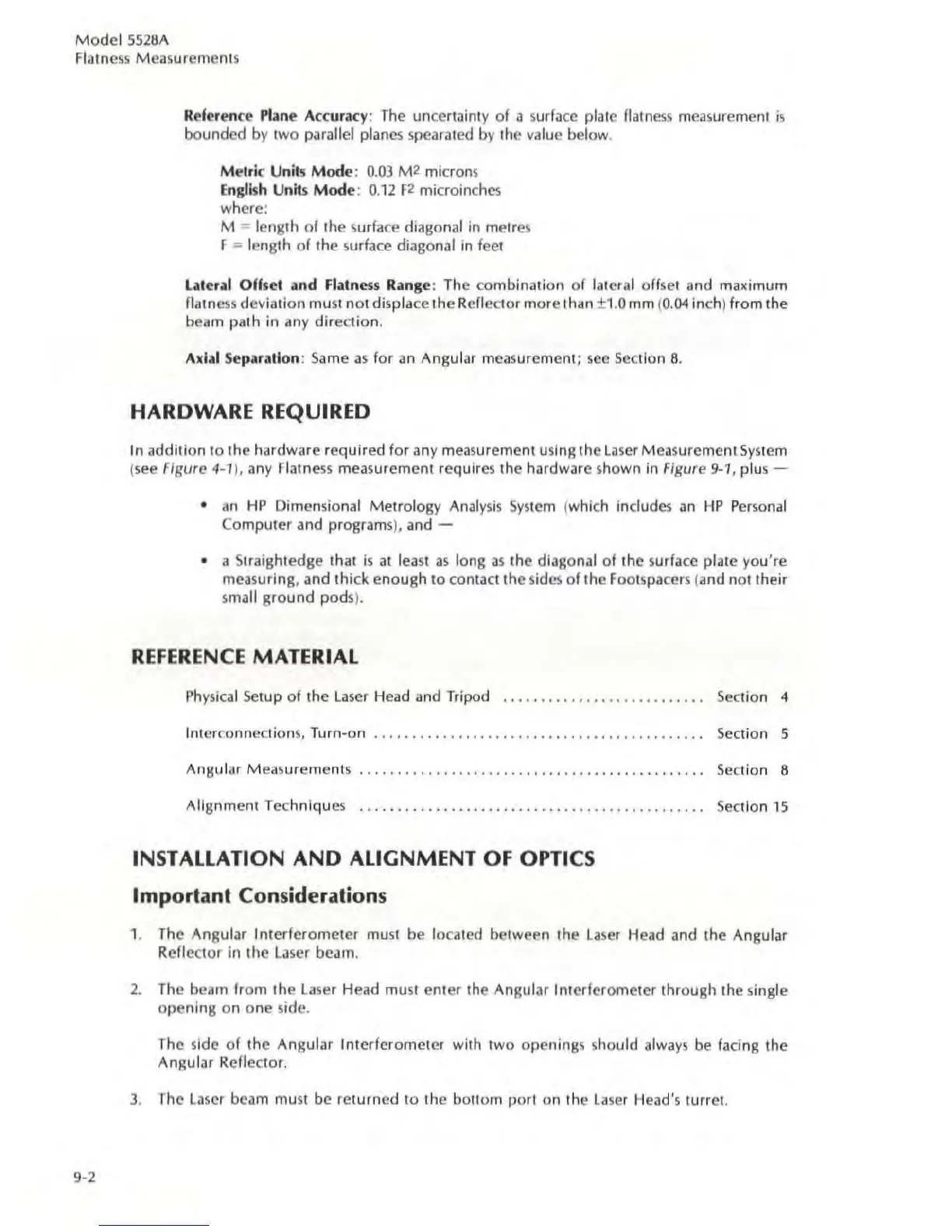Model
5528A
Flatness
Measurements
9-2
Reference Plane Accuracy: The uncenainty of a surfa
ce
plate flatness measurement is
bounded
by two paraliel planes spearated by the
va
lue below.
Melric Unils
Mode
:
0.03
M2 microns
English Units
Mod
e : 0.
12
F2 microinches
where:
M
= length
of
the surface diagonal
in
metres
F - length of
Ihe surface diagonal
in
feet
h.teril
OUset
and
Flatness Ri nge: The combination of lateral offset and maKimum
flatness deviation must not displace
the
Reflector more than ±
1.0
mm (0.
04
inch) from the
beam path
in
any direction.
Adal Separation: Same
as
for an Angular measurement; see Section
8.
HARDWARE REQUIRED
In
addition to
the
hardware
required
for any meas
urement
using
the
laser Measurement System
(
see
Figure 4-1), any Flatness measurement requires
the
hardware shown
in
Figure 9-1, plus -
• an
HP
Dimensional Metrology
Analysis
System (which includes an
HP
Personal
Computer and programs), and -
• a S
tr
aight
edge
that
is
at least
as
long as
the
diagonal of the surface plate you're
measuring.
and
thick
enoug
h
to
contact
the
sides
of
the
Footspacers (and not their
small
ground
pods
).
REFERENCE
MATERIAL
Physical Setup of
the
laser Head and Tripod ........................... Section 4
Interconnection
s.
Turn-on
..........................
,..
..
. .
...........
Section 5
Angular
Measurements
Section 6
Alignment
Technique
s
Section
15
INSTALLATION
AND ALIGNMENT OF OPTICS
Important Considerations
1. The Angular I
nterferometer
must
be
located
between
the
laser
Head and
the
Angular
Reflector in
the
laser
beam.
2. The
beam
'rom
the
lase
r Head must
enter
the Angular Interferometer through the single
opening
on
o
ne
side.
The side
of
the
Angular Int
erferometer
with two openings should always be facing the
Angular Reflector.
3.
The
laser
beam must
be
returned
to
the
bottom port
on
the
la
ser Head's turret.

